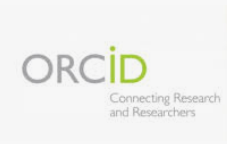Cryotherapy usage to treat plantar warts
Keywords:
WARTS, FOOT INJURIES, CRYOTHERAPY, TREATMENT OUTCOME, IMPACT ASSESSMENT, COSTS AND COST ANALYSIS, EPIDEMIOLOGY, EXPERIMENTAL, CLINICAL TRIALS, PROSPECTIVE STUDIES, HUMANS, ADOLESCENT, MALEAbstract
Treating dermatosis with liquid nitrogen as cryogen (substance generating cold) allows cellular destruction in more than 5 mm depth, making it indispensable to use it treating cutaneous cancers; besides that, it is cheap, easy to conserve and manage, and it is not considered flammable or toxic. Its applying retains the growth factor inside the injury, the collagen is not damaged as it is in burning by hot, there is not almost injury contraction, the perineurium is not altered, and when the tissue necrosis takes place, it retains tissue necrosis factor, helping to increase the necrosis of tissues. Taking into account the high incidence of dermatosis that can be treated with cryogen, in our consultation; we decided to generalize this treatment at the Provincial Interior Ministry Clinic. Plantar warts represent a big percent, limiting our patients in developing their working activities. This cutaneous viral disease is favored by the patients' systemic immunodepressions, hyperhidrosis and podalic disturbances. We selected the patients assisting to our extern al consultation with plantar wart clinical diagnosis in the period from September 2006 to September 2007. They signed an act of informed consent where the possible side effects are explained. Liquid nitrogen was applied with cotton applicators once a week after mechanical reduction. We made a clinical evolving evaluation fortnightly during the treatment, according to the elements and clinical characteristics referred by the patient, and proved by the physical examination carried out by the main investigator, because of the likelihood of short and long time side effects. This investigation demonstrated that cryotherapy is efficacious in treating plantar warts, since all the patients were healed in a short time period, most of them without side effects.Downloads
Published
How to Cite
Issue
Section
License
All content published in this journal is Open Access, distributed under the terms of the CC BY-NC 4.0 License.
It allows:
- Copy and redistribute published material in any medium or format.
- Adapt the content.
This will be done under the following terms:
- Attribute the authors' credits and indicate whether changes were made, in which case it must be in a reasonable way.
- Non-commercial use.
- Recognize the journal where it is published.
The copyrights of each article are maintained, without restrictions.





